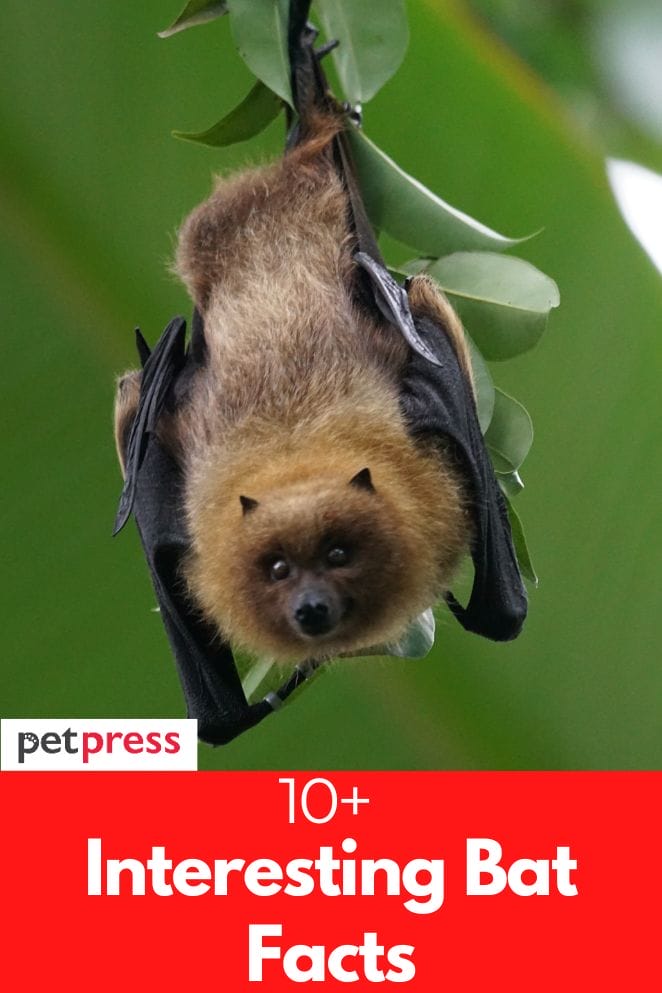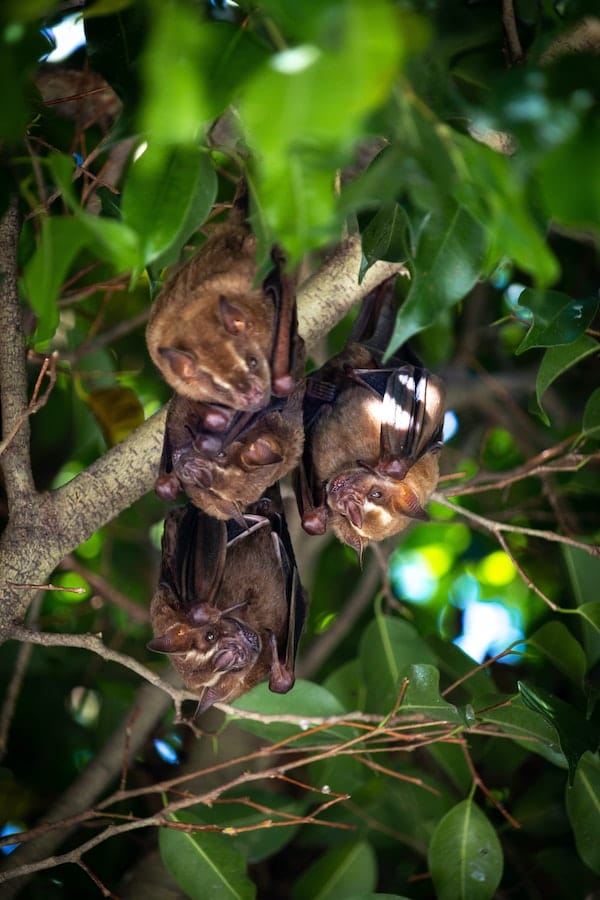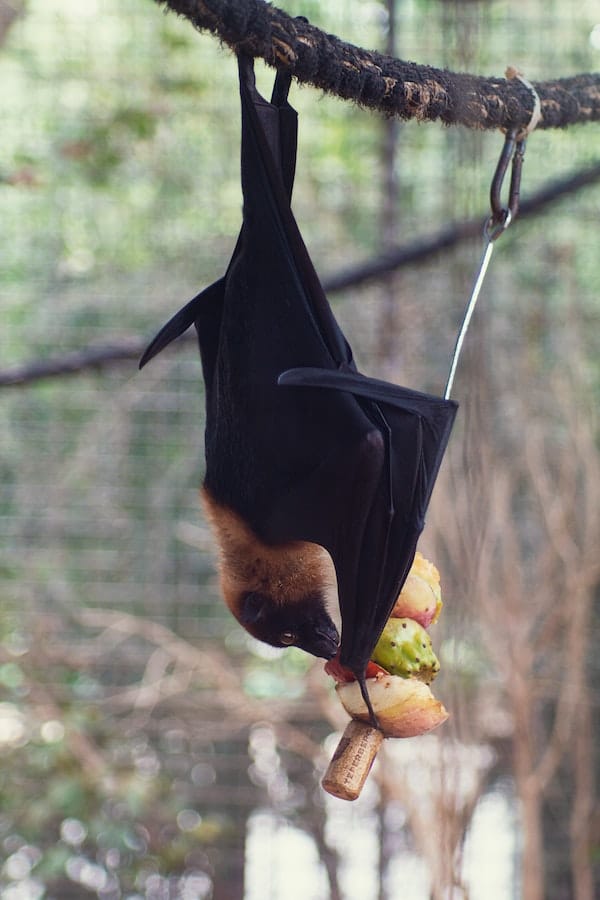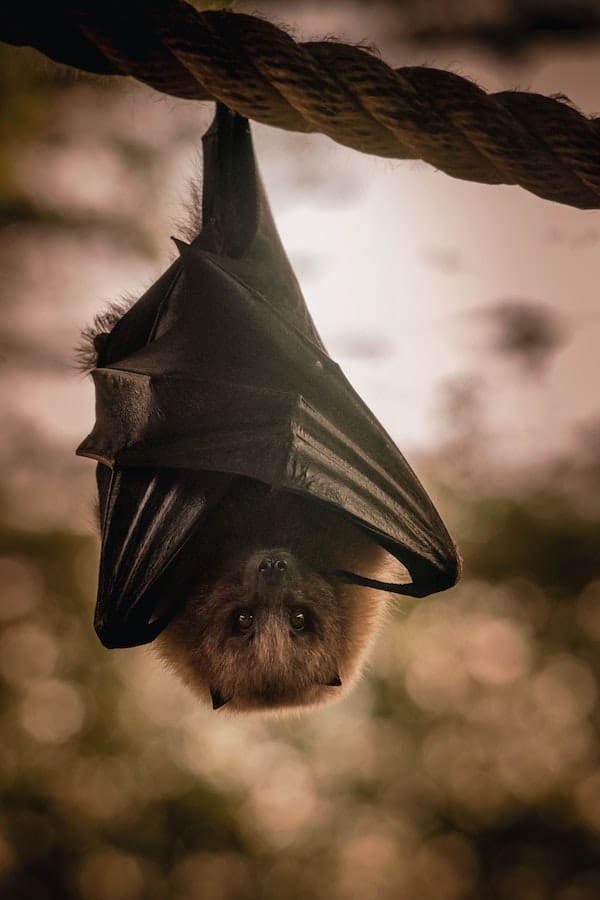
Bats are fascinating creatures that have many interesting and unique characteristics.
They are well-known for their use of echolocation to navigate and hunt, as well as their often long lifespans and impressive migratory abilities.
Whether you’re a bat enthusiast or just love learning about the natural world, there is plenty to discover about these fascinating creatures.
Fact #1: Bats are the only flying mammal.
Bats are truly unique animals and are the only mammals that can truly fly.
With their large wings and lightweight bodies, they are perfectly adapted for life in the air.
They use a combination of echolocation and other sensory abilities to navigate and hunt while airborne, making them highly efficient predators.
Fact #2: There are over 1,200 species of bat.
There are over 1,200 species of bat worldwide, making them one of the most diverse and widespread groups of mammals.
Compared to other mammal groups, bats have a much larger number of species, with more than twice as many known species as rodents or even primates.
This is due largely to the wide variety of lifestyles that different bat species have, from the tiny, insectivorous bats that flit through the air to the massive fruit-eating megabats that dwell in tropical forests.
Fact #3: Bats are found on every continent except Antarctica.

Bats are found on every continent except Antarctica, making them truly global animals.
Despite their wide distribution and diversity, bats are often overlooked or misunderstood by those who aren’t familiar with them.
This is likely because they are mostly nocturnal and secretive, making them difficult to observe in the wild.
However, with their unique adaptations and fascinating behaviors, bats are well worth getting to know.
Fact #4: The smallest bat is Kitti’s hog-nosed bat.
The smallest bat is Kitti’s hog-nosed bat, which weighs only about two grams.
This tiny creature is a little larger than a penny and has an incredibly long snout that it uses to sniff out insects at night.
Despite its small size, Kitti’s hog-nosed bat plays an important role in its ecosystem, helping to keep insect populations under control and spread seeds through its diet of fruit.
Fact #5: The largest bat is the giant golden-crowned flying fox.
The largest bat is the giant golden-crowned flying fox, which has a wingspan of up to six feet.
This impressive creature primarily lives in Southeast Asia and subsists on fruit, pollen, and nectar from various plants.
With such a large size comes several unique adaptations, including strong legs for carrying heavy loads and an increased ability to regulate body temperature in changing climates.
Despite its size, the giant golden-crowned flying fox is an important pollinator and seed disperser for many tropical forests.
Fact #6: Bats can fly up to 60 miles per hour.
Bats are excellent fliers and have been clocked flying up to 60 miles per hour.
This makes them some of the fastest flyers in the animal kingdom, with only a few birds and insects beating them in speed.
The exact mechanisms that give bats this ability are still unknown, but it is believed that their lightweight skeletons and large wings help them to maneuver quickly and efficiently through the air.
- Related post: How to Name Your Pet Bat
- Related post: Famous Bat Names
Fact #7: Bats typically live 15-20 years in the wild but can live up to 30 years in captivity.

Bats are long-lived animals, typically living 15 to 20 years in the wild.
This is partially due to the fact that they have few natural predators and do not face many of the same risks as other vertebrates, such as predation or disease.
However, bats also have a number of unique adaptations that help them to survive for many years, including their ability to hibernate during periods of low food availability.
In captivity, some bats have been known to live for up to 30 years, though the typical lifespan is between 20 and 25 years.
This longevity can be attributed in part to their dietary flexibility, as well as the care that they receive from dedicated keepers.
Fact #8: Bats are important pollinators.
Bats are important pollinators and seed dispersers in many different ecosystems.
By feeding on the nectar, pollen, and fruit of a wide variety of plants, bats help these organisms to thrive and spread their genetic material.
In turn, plants provide food for the insects that bats eat, creating a mutual relationship that is crucial to the health of many tropical forests.
Without the important role that bats play in pollination and seed dispersal, many plant and insect species would struggle to survive.
Thus, it is clear that bats are an essential part of our planet’s ecosystems and biodiversity, making them vital players in global food webs.
Fact #9: Bats eat their weight in insects every night.
Bats are voracious eaters, and each night they can consume their body weight in insects and other small animals, including up to 1,000 mosquitoes, in just one hour.
This makes them an important natural control for insect populations and a key player in many food webs.
In addition to eating large amounts of insects every night, bats also play an important role in seed dispersal and pollination, helping many plants to thrive.
Fact #10: Some bats can locate their prey by using echolocation.
One of the fascinating abilities that bats have is their ability to use echolocation, or sonar, to find food and navigate in the dark.
This involves producing a high-pitched sound with their vocal cords and then listening for the return echo.
By doing this, bats are able to locate their prey—such as insects and small animals—with remarkable accuracy and speed, allowing them to consume up to their body weight in food each night.
Additionally, bats can also use echolocation to avoid obstacles and hazards in their environment, making them true masters of the night sky.
Fact #11: A group of bats is called a “colony” or a “cloud” of bats.
Although bats are often referred to as a “colony” or a “cloud,” these terms can be somewhat misleading.
A more accurate collective term is a “roosting group,” which refers to the specific location where bats gather and sleep together, such as in caves, trees, buildings, or other tight spaces.
This grouping of bats can also be referred to as a “cluster” or a “swarm,” both of which are terms that more accurately reflect the way in which bats move and interact.
Fact #12: There are three main types of bats.

Although many people think that bats are all the same, this is not the case.
In fact, there are three different groups (or taxa) of bats: megabats, microbats, and vampire bats.
Megabats exclusively feed on plant nectar and pollen, while microbats use echolocation to find their prey, which typically consists of insects, small animals, and other vertebrates.
Vampire bats are unique among bats in that they exclusively drink the blood of larger mammals, such as cows and horses, though some species have been known to feed on birds or lizards as well.
Fact #13. Megabats are also known as “fruit bats.”
Some people refer to megabats as “fruit bats” because of the fact that they primarily feed on the nectar, pollen, and fruit of many different plant species.
In addition to using echolocation to find their prey, megabats also rely on their keen sense of smell and excellent vision in low-light conditions to locate and consume these nutritious plant products.
Although megabats are primarily fruit eaters, they may occasionally prey on insects or other small animals as well.
Overall, bats are fascinating and important creatures that play a key role in many of our planet’s ecosystems.
Whether they are feeding on large amounts of insects each night, pollinating plants, or helping to spread seeds, it is clear that these amazing flying mammals deserve our respect and appreciation for all that they do.
So the next time you see a bat flying overhead, take a moment to marvel at these incredible creatures and appreciate all they do for us and our environment.


GIPHY App Key not set. Please check settings